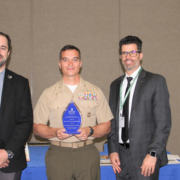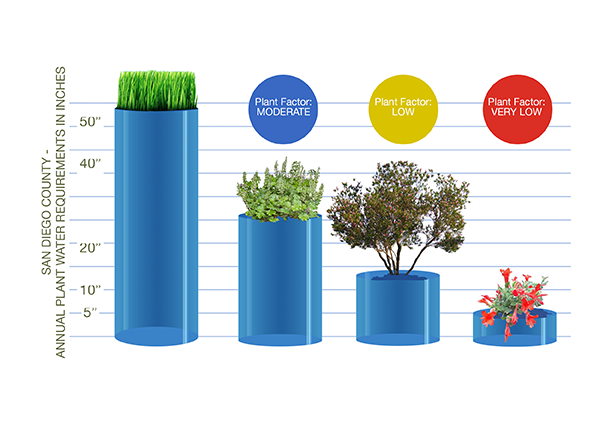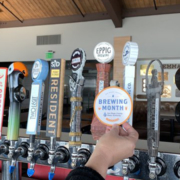WaterSmart Landscape Contest Winner Creates Wildlife Habitat
The winner of the Olivenhain Municipal Water District 2020 WaterSmart Landscape Contest created a wildlife habitat by removing grass and replacing it with climate-appropriate plants.
The District’s Board of Directors honored Laura Lisauskas as the winner of the contest during its September 9 meeting.
Lisauskas purchased her home in 2018 and decided to remove the existing grass and replace it with a more attractive, climate-appropriate landscape. In addition to being water-efficient, the new layout has created a habitat for pollinators and local wildlife, provided fruit for her family, and enhanced the beauty of her neighborhood.
Water-efficient, WaterSmart landscape

The new landscape is water-efficient, eye-catching and has created a habitat for pollinators and local wildlife. Photo: Olivenhain Municipal Water District
Her design divided the garden into multiple interest points and color schemes to highlight different plant collections. Lisauskas even designed and constructed the dry-stacked retaining wall herself.
“Ms. Lisauskas has captured the range of textures and colors found in some of our most beautiful local natural landscapes,” said Bob Kephart, Olivenhain Municipal Water District board director. “Her inspiring, water-efficient landscape is a prime example of using climate-appropriate plants and rainwater harvesting elements to conserve water and reduce pollution from runoff.”
The colorful winning WaterSmart design was inspired by the diversity of San Diego County’s ecosystems and features a variety of native and low-water-use plants including California Poppy, Blue Bells Emu Bush, and Pink Rockrose. The landscape utilizes drip irrigation and onsite rainwater collection, further reducing outdoor water use.
Landscape makeover attracts pollinators
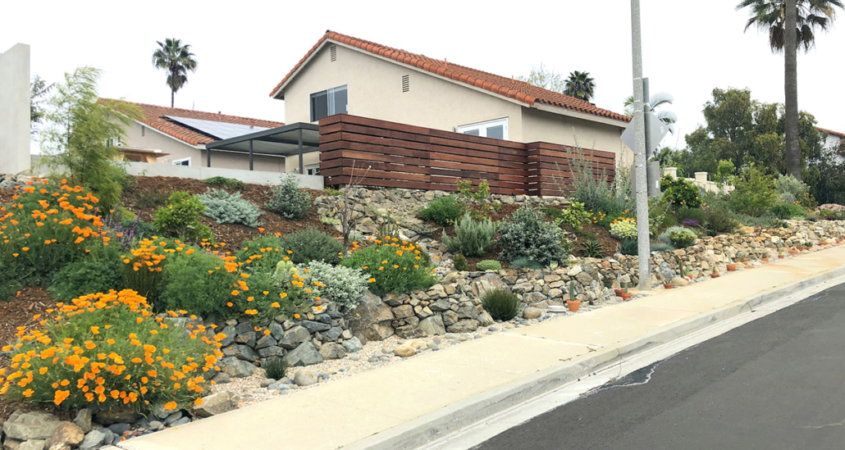
The winning landscape was inspired by diverse San Diego County ecosystems and features a variety of native and low-water-use plants including California Poppy and Pink Rockrose. Photo: Olivenhain Municipal Water District
The Watersmart Landscape Contest is held annually by water agencies throughout San Diego County to showcase attractive landscapes that use less water than conventional turf-heavy landscapes. Winning entries exhibit excellence in curb appeal, climate-appropriate plant selection, design, efficient irrigation, and environmental considerations.
The WaterSmart Landscape Makeover Program offers free, online classes: https://landscapemakeover.watersmartsd.org/
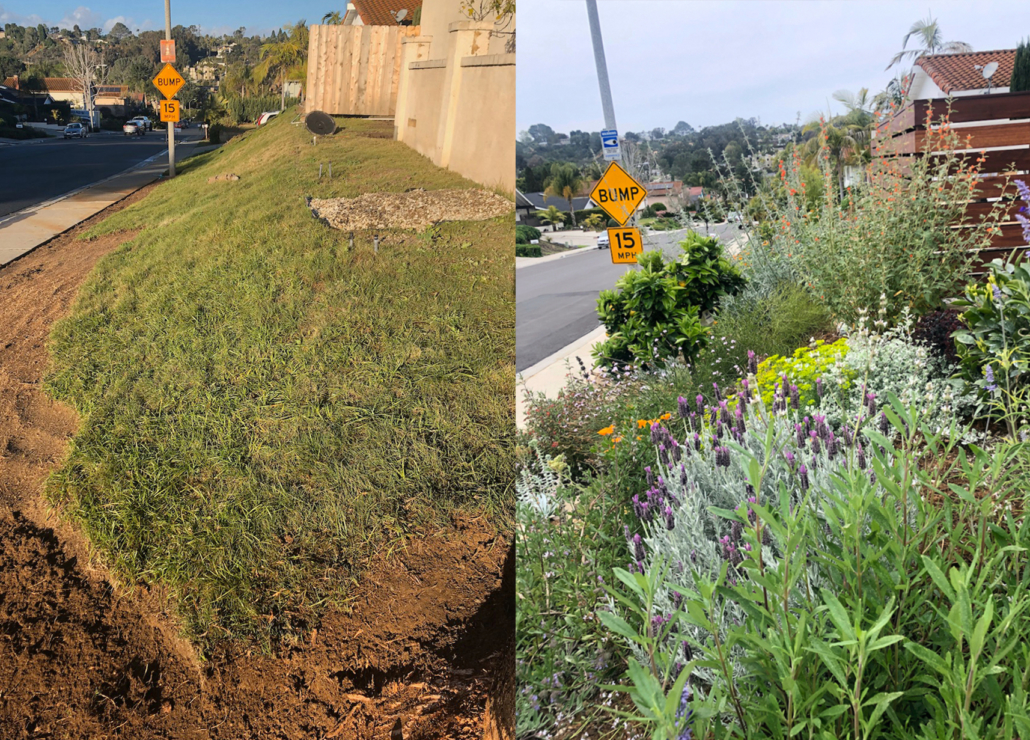
Before and after view of the 2020 WaterSmart Landscape Contest winner’s home. Photos: Olivenhain Municipal Water District


 Sweetwater Authority Logo 2019
Sweetwater Authority Logo 2019